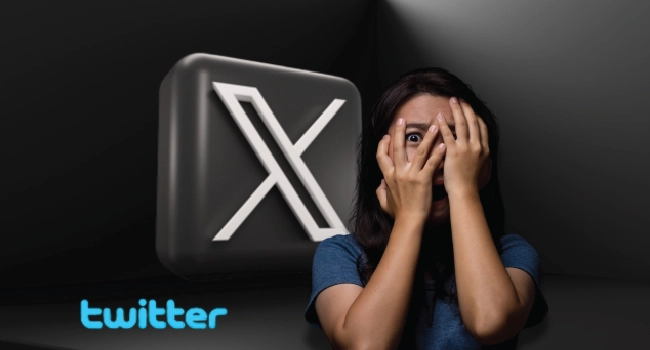The Twitter algorithm is the invisible engine deciding which posts land on your feed and which ones disappear into the noise.

If you’ve ever wondered why some tweets explode with engagement while others barely move, the answer lies in how this system ranks and serves content. In simple terms, it’s a mix of signals, predictions, and community insights.
In this guide, we’ll break down how the feed works, what matters most, and how you can use that knowledge to grow your reach.
How the Twitter Algorithm Works (For You Pipeline)

To understand the Twitter algorithm, picture it as a four-step process that decides what you see in the For You feed. It starts by collecting possible tweets, then ranks them, filters them, and finally serves you a curated mix.
-
1. Candidate sourcing – The system pulls tweets from two places: accounts you follow (in-network) and accounts you don't follow but might like (out-of-network). The balance of both makes the feed feel fresh.
-
2. Ranking – Every candidate tweet gets scored. The system predicts how likely you are to like, reply, share, or click. Posts with higher scores move up.
-
3. Heuristics and filters – The system prevents one person from dominating your feed. It also applies rules like blocking tweets you've muted or hiding unsafe content.
-
4. Serving – Finally, the feed blends these choices, giving you a mix of familiar and new voices.
This pipeline runs constantly, so your feed updates in real time. By knowing this flow, you can post in ways that give your tweets a better shot at being picked.
Content That's Not Eligible for Recommendations
Even if the Twitter algorithm finds your post engaging, it can still be blocked from reaching the For You feed. X has clear rules about what content and accounts won't be recommended.
Content not eligible:
-
Graphic sexual material
-
Hateful or violent speech
-
Manipulative or misleading content
-
Spam or platform abuse
Accounts not eligible:
-
Spam-like behavior (mass follows or repetitive posting)
-
Policy violations that hurt platform safety
This is often confused with "shadowbanning," but it's not a mystery filter. It's simply a set of published guidelines. For brands and creators, the takeaway is simple: stay within these rules or risk your posts disappearing from discovery.
As a quick example, imagine posting helpful finance tips with a clear chart. That content is safe and algorithm-friendly. But mixing it with spammy hashtags or manipulative claims could block it from recommendations instantly.
Another common confusion happens when people try to reset Twitter algorithm by changing their behavior. While you can refresh what you see by following or unfollowing accounts, breaking policy rules still blocks recommendations, no matter what.
What Engagement Signals Actually Matter

The Twitter algorithm pays close attention to how people interact with your posts. Not all actions carry the same weight. Some show deeper interest than others, and that influences how far your tweet travels.
Here's what matters most:
-
Replies – Conversations signal strong interest, so replies often give your post a boost.
-
Reposts (retweets) – Sharing expands reach, and the system values this.
-
Likes – Helpful, but lighter than replies or reposts.
-
Bookmarks – A sign of long-term interest, which the system reads as quality.
-
Clicks and dwell time – If people open your tweet and spend time on it, that's a powerful signal.
Additionally, the feed checks for balance. It won't show too many posts from the same account in a row. That's why spacing your content matters.
Strong engagement also affects impressions. If you've ever wondered what is a tweet impression on Twitter, it simply means how many times your post appeared on someone's screen, regardless of likes or clicks.
If you want to speed things up, you don't have to wait around for organic momentum alone. You can give your posts a push by buying Twitter retweets as one of our most popular services.
The service comes from real accounts with fast delivery, allowing you to spark the kind of engagement that tells the algorithm your content deserves more reach.
Strategies to Work With the Twitter Algorithm
You can't control the Twitter algorithm, but you can work with it. Small adjustments in how you post can make a big difference.
Here are a few proven strategies:
-
Community-first approach – Focus on your niche. Encourage early likes and replies from accounts in your space. This guides the system to show your content to the right clusters of people.
-
Design for conversation – End tweets with a question or start a thread that invites replies. Early responses act like fuel.
-
Reply ladders – When someone comments, reply back quickly. This builds chains of engagement the algorithm favors.
-
Link handling – Instead of dropping links right away, summarize your point first. This keeps readers on the tweet longer and increases dwell time.
-
Content hygiene – Avoid spammy hashtags, misleading claims, or unsafe media. Clean posts have a much better chance to spread.
-
Test and learn – Try different posting times, formats, and calls to action. Measure what works, repeat, and drop what doesn't.
The goal is simple: create posts that spark real interaction while staying safe for recommendations.
Common Myths About the Twitter Algorithm

A lot of confusion surrounds the Twitter algorithm, but most of it comes from outdated info or half-truths. Let's clear up the biggest myths.
-
"Replies are worth 27x more than likes." – Engagement weights exist, but those exact numbers come from old code. What matters now is sparking meaningful actions, not chasing fixed multipliers.
-
"All links are punished." – Links don't automatically block reach. The system only cares if people engage. If a link drives clicks and dwell time, it can still perform well.
-
"Shadowbans kill accounts." – X uses eligibility rules. If you break them, your posts won't be recommended.
-
"Premium guarantees viral reach." – Premium boosts replies in threads, but it doesn't guarantee top placement in the For You feed.
Conclusion
The Twitter algorithm might feel complex, but once you see how it works, the path to growth becomes clearer. Every step, from how tweets are sourced, ranked, and filtered, comes back to one thing: engagement that feels real and relevant.
When you focus on sparking conversations, guiding your content into the right communities, and keeping it safe for recommendations, the algorithm starts working with you instead of against you.
Premium features can give you a boost, but the real wins come from consistent, thoughtful posting and quick interaction with your audience.
FAQs | Frequently Asked Questions |
How does the Twitter algorithm decide which replies to highlight?
The system boosts replies that it predicts will add value to the conversation. With Premium, your replies also get prioritization in big threads.
Does deleting tweets hurt performance?
No. Deleting a post won’t damage your overall account reach. The algorithm focuses on active, live tweets and their engagement.
Is it useful to engage with other accounts in my niche?
Definitely, building connections helps you get early engagement from the right communities, which pushes your tweets to wider audiences.
What role do hashtags play today?
Hashtags still help with discovery, but their effect is smaller than before. Relevant, engaging content carries far more weight.
